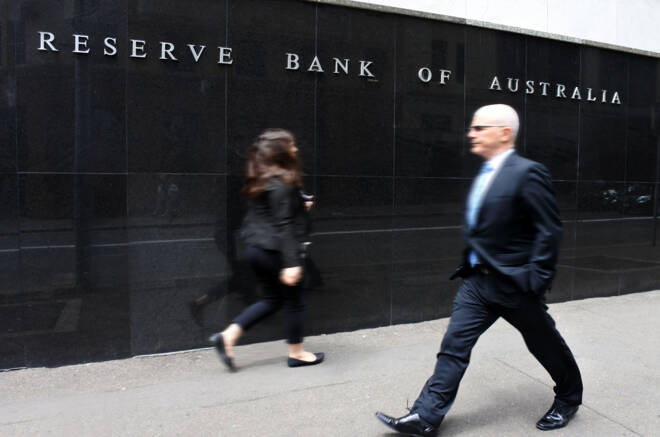Advertisement
Advertisement
AUD/USD and NZD/USD Fundamental Daily Forecast – RBA Minutes: Board Agreed Additional Rate Hikes Were Likely
By:
The market is pricing in a high probability of further rate hikes over the coming months by the RBA, with the official cash rate rising to 3.85%.
In this article:
The Australian Dollar is trading flat early Tuesday after the board of the Reserve Bank of Australia (RBA) released the minutes of its Feb. 7 monetary policy meeting.
In the minutes of the policy meeting published Tuesday, the RBA board debated raising official interest rates by 50 basis points, noting that recent wages and prices data have exceeded expectations.
However, the RBA minutes also revealed that the final decision to deliver only a 25-basis-point rate increase was determined by the fact that interest rates have been increased substantially since May 2022.
“With interest rates already having been adjusted substantially, there was less need to move by 50 basis points at this meeting,” the minutes said.
The minutes said the argument for a 50-basis-point hike stemmed from the concern that there has been a pattern of incoming prices and wages data exceeding expectations, the minutes said.
“If it did persist, there would be significant costs,” according to the minutes.
At 00:45 GMT, the AUD/USD is trading .6910, unchanged. Last Friday, the Invesco CurrencyShares Australian Dollar Trust ETF (FXA) settled at $68.27, up $0.20 or +0.29%. The ETF market was closed on Monday due to a U.S. holiday.
More Rate Hikes on the Table
The market is pricing in a high probability of further rate hikes over the coming months, with the central bank saying that its current forecasts for inflation are based on an assumption that the official cash rate will be raised to 3.85% from the current level of 3.35%.
“Members agreed that further increases in interest rates are likely to be needed over the coming months ahead to ensure that inflation returns to target and that the current period of high inflation is only temporary,” the minutes said.
Short-Term Outlook
At two parliamentary hearings last week, RBA Governor Philip Lowe doubled down on the consequence of not able to get inflation under control, warning that domestically sourced cost pressures were still picking up even if consumer price inflation as a whole may have finally peaked last quarter.
And now we know why with the minutes saying, “The recent inflation data had suggested more breadth and persistence in inflation than had been expected and that strong demand was leading to price increases in some parts of the economy,” the minutes said.
“While inflation was expected to decline, there was a risk that it could persist at an uncomfortably high level, which would entail longer term costs.”
Despite the need for the RBA to make further rate hikes, the Federal Reserve is also facing similar issues with its own inflation problems. We are expecting the AUD/USD to further weaken now that the market is pricing in at least three rates hikes by the Fed into June. One of them could even be a 50 basis point increase.
For a look at all of today’s economic events, check out our economic calendar.
About the Author
James Hyerczykauthor
James is a Florida-based technical analyst, market researcher, educator and trader with 35+ years of experience. He is an expert in the area of patterns, price and time analysis as it applies to futures, Forex, and stocks.
Latest news and analysis
Advertisement
